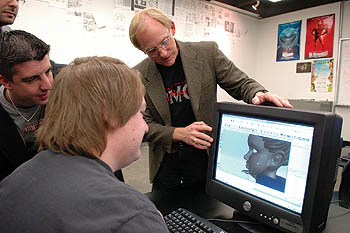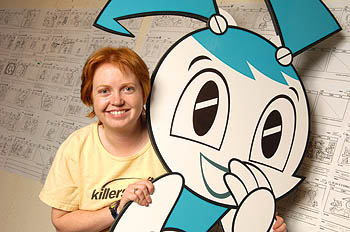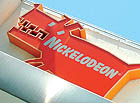For all the technical advances, however, whether
a project is created on paper or through a computer, most
everyone — industry professionals, faculty members,
alumni, students — agrees that strong drawing skills
are paramount.
Even before Fullerton’s program was fully on its feet, “we had alumni getting jobs based just on their drawing skills,” says Don Lagerberg, professor of art. “That’s one of our strengths — classically trained artists with discipline, who are responsive to team leadership situations.”
“Paper is still part of the animation process,” says Rachelle Lewis, a recruiter for Sony Pictures Imageworks. “If you’re only taking computer animation classes, your work’s going to look like crap. You will not work at an animation feature studio.
Working on a computer-generated feature requires the same discipline as a traditional animator. You have to understand the anatomy of a line, weight, movement. We care that you can make an inanimate object come alive. To entertain people you have to be an actor.”
Garrett Shikuma ’04 (B.F.A.) is a character animator on the fourth installment of the “Medal of Honor” computer game series at Electronic Arts, one of the biggest publishers in the gaming industry. He’s on a computer eight to 10 hours a day, but “after hours, I’m always drawing. I’ll take my sketchbook, go to Starbucks and draw people.
“My acting skills are good, so they put me on cinematics — little mini-movies in the game. When I have these scenes, I think about the character’s emotional state. Sometimes, I take out my sketchbook, draw it out, then put it in the computer.”
Audiences for Blue Sky Studios’ “Robots” have seen the work of character animator Hans Dastrup ’03 (B.F.A.), who helped bring to life the Robin Williams-voiced Fender, and Wonderbot. “All my work is done on computer, I don’t need to draw,” he says. However, “my drawing skills at times do come in handy — it’s still a necessity. The reality is, the guys who become editors or directors can draw.”
For Heather Martinez ’04 (B.F.A.), drawing is part of her job at Nickelodeon, where she’s is a storyboard artist/writer for the series “My Life as a Teenage Robot.” “I don’t have a computer on my desk,” she says. “All storyboards are hand-drawn.” Working in the industry since 1999, Martinez also was an illustrator for the “SpongeBob SquarePants” books.






